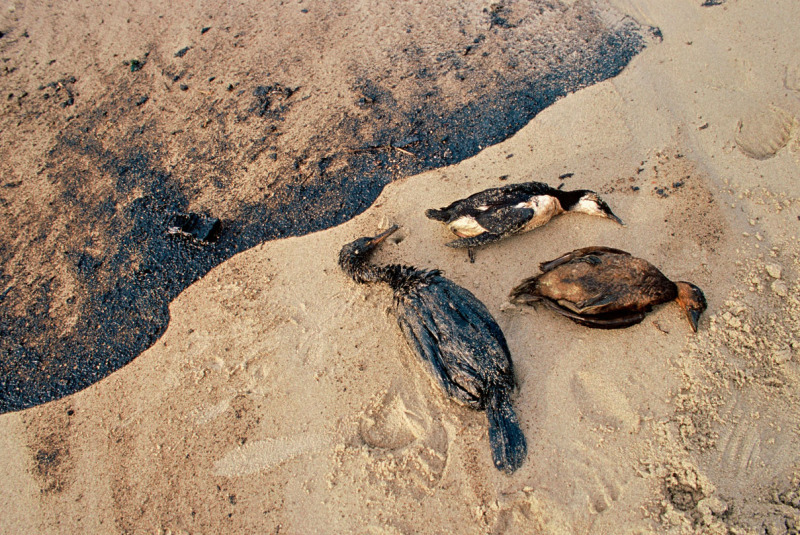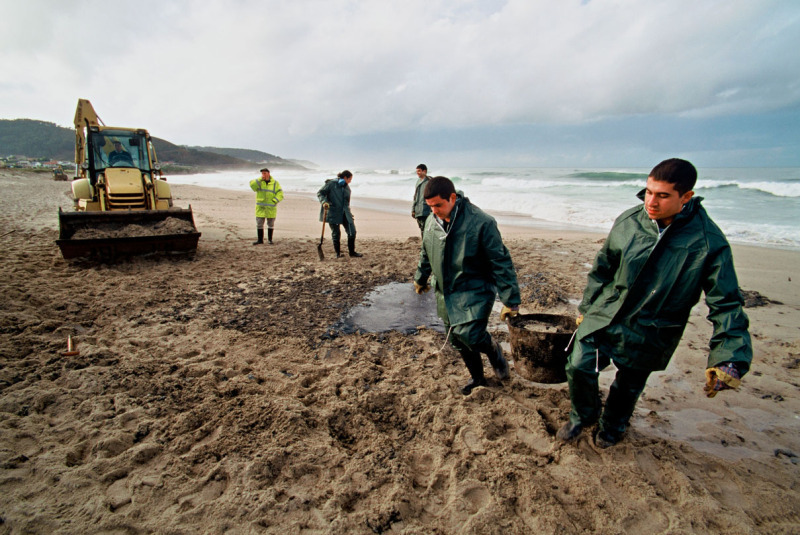Oil Spill Findings Don’t Stand Up to Scrutiny
In December, the Joint Review Panel, JRP, told the federal government the project is in the Public Interest. In June, the federal government will make its decision based, in part, on this recommendation. In a series of blogs this week, WWF looks at the flaws in the environmental review of the proposed Northern Gateway Project.
There are two major problems with the Joint Review Panel’s conclusions about a large tanker spill of diluted bitumen at sea. One, it believed a spill would be unlikely, even though the risk assessment it relied on to decide this has been thoroughly discredited. And two, the Panel believed if there ever was a large spill, significant adverse impacts to the environment would be unlikely.
The impacts, it decided, would be neither widespread nor long-lasting. Unfortunately, the Panel based its conclusions on Enbridge’s account of how diluted bitumen would behave in a potential spill. This account has since been discredited. The Panel also believed that the impacts of a spill could be dealt with by a marine oil spill response plan. That plan has not even been developed yet.
The panel did not listen to warnings from project opponents that diluted bitumen could submerge and be carried long distances by currents. New federal research now confirms the warnings the Panel dismissed: Diluted bitumen can submerge as it weathers. The damage from a diluted bitumen spill could be much more widespread than the Panel assumed from the company’s evidence.
The Panel decided the impacts of a large oil spill would not be long-lasting. It thought impacts on the environment, people and economy would likely be reduced “in weeks to months”. How? By “effective spill response, financial compensation and natural recovery processes with the environment.”
Consider each of these remedies in turn:
Effective spill response
Would it reduce the impacts of a large spill on the environment? Surely ‒ if such a thing existed. But no one knows how to mount an ‘effective spill response’ to a large tanker spill. The International Tanker Owners Pollution Federation, itself, says “at best only 10 to 15 per cent, and often considerably less” of oil spilled at sea is contained or recovered. A recent BC government study concluded that only three per cent of a 10,000-tonne oil spill on BC’s north coast could be cleaned up. While Enbridge is required to develop a marine oil spill response plan as a condition for approval, it’s hard to believe the company will achieve what no one else has managed yet, anywhere, in the world – an effective response to oil spilled at sea.
Financial compensation
Compensation can alleviate some of the social costs of a disaster. But, as we’ve seen from the Exxon Valdez and BP Deepwater Horizon disasters, no one should imagine this remedy will be implemented in ‘weeks to months.’ It took years and years to resolve compensation for these two disasters.
Natural Recovery Processes
When all else fails, we can hope that ecosystems will recover naturally (no thanks to us). Twenty-five years of monitoring by the US National Oceanic and Atmospheric Administration in the wake of the Exxon Valdez disaster, show that natural recovery after a big oil spill is uncertain. And when it does occur, it takes years or decades, not weeks or months.
The Panel’s findings on oil spill risks do not stand up to scrutiny; it relied on faulty evidence and reached faulty conclusions.
What is required now is a reliable risk assessment to estimate the likelihood of a tanker spill. We also need to understand the potential scale of damage based on what we now know about how bitumen could behave at sea. Finally, we need to have realistic expectations for what any oil spill response plan could accomplish.
Only then can we hope to understand the risks and make informed decisions.



